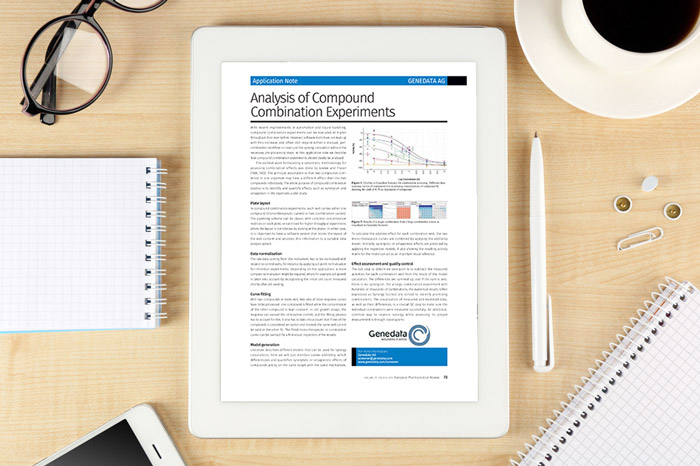Application Note: Analysis of Compound Combination Experiments
Posted: 13 January 2015 | Genedata
With recent improvements in automation and liquid handling, compound combination experiments can be executed at higher throughput than ever before. However, software tools have not kept up with this increase and often still require either a manual, percombination workflow or cover just the synergy calculation without the necessary pre-processing steps. In this application note we describe how compound combination experiments should ideally be analysed.
The earliest work formulating a systematic methodology for assessing combination effects was done by Loewe and Fraser (1928, 1872). The principal assumption is that two compounds combined in one organism may have a different effect than the two compounds individually. The whole purpose of compound combination studies is to identify and quantify effects such as synergism and antagonism in the organisms under study.
This application note is restricted - login or subscribe free to access


Why subscribe? Join our growing community of thousands of industry professionals and gain access to:
- bi-monthly issues in print and/or digital format
- case studies, whitepapers, webinars and industry-leading content
- breaking news and features
- our extensive online archive of thousands of articles and years of past issues
- ...And it's all free!
Click here to Subscribe today Login here





